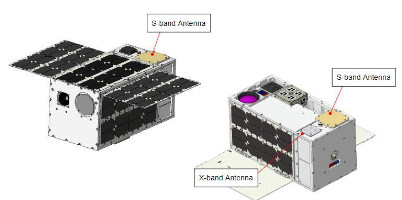| Satellite | SC1 (GITAI-SC1) |
|---|---|
| Spacecraft type | CubeSat |
| Units or mass | 16U |
| Status | Operational (Timelapse shared in early 2025) |
| Launched | 2024-12-21 |
| NORAD ID | 62388 |
| Deployer | ? |
| Launcher | Falcon 9 (Bandwagon-2) |
| Organisation | GITAI |
| Institution | Company |
| Entity type | Commercial |
| Nation | US |
| Oneliner |
Deploy a tethered payload cube and will observe the cube with two wide field-of-view visual cameras, a 3D LiDAR sensor, a laser rangefinder, and an infrared camera. |
| Description |
Design and develop a custom spacecraft bus and control system in-house and to improve GITAI’s perception, guidance, navigation and control technologies in an orbital environment in anticipation of a 2026 product launch. Following spacecraft commissioning, SC1 will perform maneuver tests to verify the propulsion system’s functionality and performance. After the maneuver tests, SC1 will deploy a tethered payload cube and will observe the cube with two wide field-of-view visual cameras, a 3D LiDAR sensor, a laser rangefinder, and an infrared camera. The deorbit subsystem enables the satellite to deorbit within 5 years of the mission completion date. The system utilizes the NPC Spacemind ARTICA drag sail. The drag sail will be deployed from its container inside the spacecraft after the mission is complete. Once deployed, the drag sail will increase the atmospheric drag force on the spacecraft and slow its orbit, thereby decreasing the time until the satellite deorbits. The propulsion system utilizes one thruster (Dawn Aerospace: CubeDrive 0.8U) with Green Bipropellant (N2O+Propylene) and a self-pressurizing tank. The propulsion system is on board to gain flight heritage and for on orbit testing and calibration. No orbit changing is planned. The payload complement includes a tethered deployable cube with fiducial and reflective markers on the surface for testing GITAI’s proprietary visual and 3D recognition software. The payload sensor suite includes two wide field-of-view visual cameras, a 3D LiDAR sensor, a laser rangefinder and an infrared camera. This payload will test the connection stability of the Wi-Fi to communicate between modules within the spacecraft. The WPEA-352ACNRBI Wi-Fi module on the payload computer will communicate with the Raspberry Pi Pico W Wi-Fi module, in the 2.4GHz band. |
| Sources | [1] [2] [3] |
| Photo sources | [1] [2] |
| COTS subsystems |
|
| Subsystems sources | [1] |
| Keywords | De-orbit device, Propulsion |
| On the same launch |
Last modified: 2025-04-23

